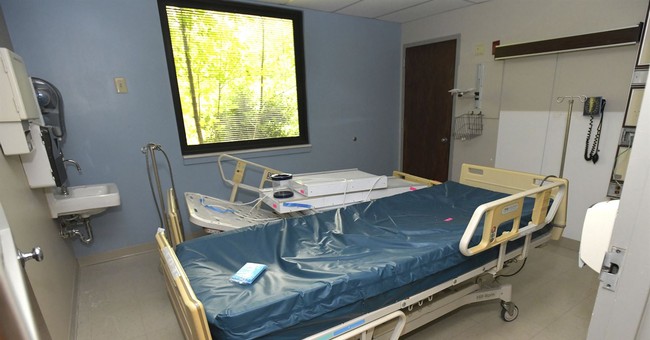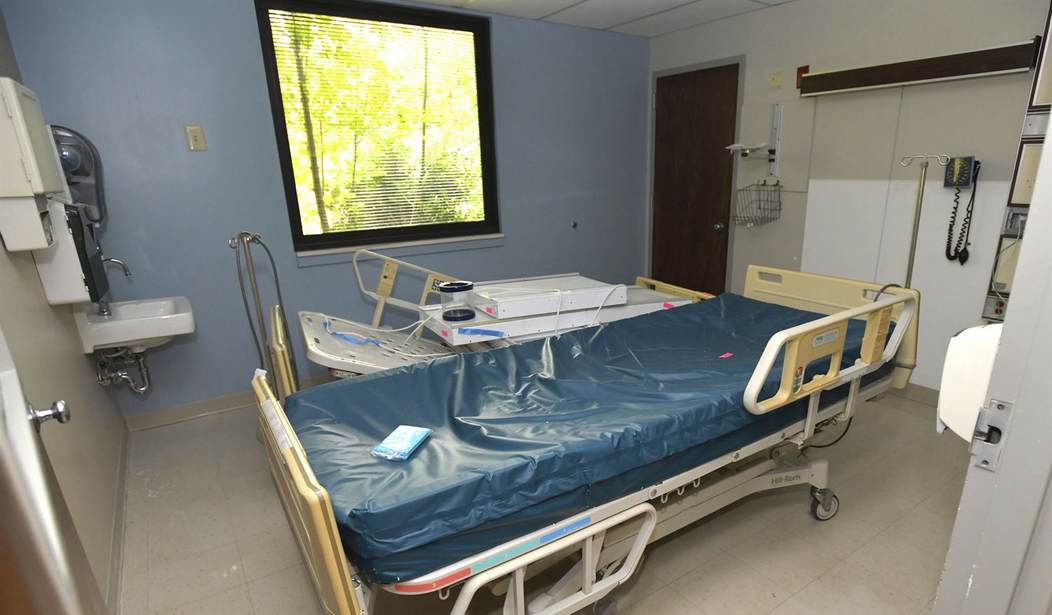
This Aug. 25, 2018, photo shows beds and other equipment being assembled in an ICU room in the Lee County Medical Center in Pennington Gap, Va. Virginia’s westernmost county had appeared to be on track to reopen its only hospital, a rare accomplishment a rural community anywhere in the country. But questions involving the company expected to run the Lee County facility have thrown the plan into question at the last minute. (AP Photo/Earl Neikirk)
Day after day, we are hit with a death toll for the Wuhan virus (see Mike Ford’s epic series on the day-to-day body count). The implication in the numbers is clearly: the Wuhan virus is deadly and that people are dying in droves. Well, that’s not even an impression, it is a regular news feature. For instance:
Dead bodies pile up outside NYC funeral home: ‘We’ve got no more room inside’
As Coronavirus Deaths Surge, New York City Allows Cremations 24 Hours a Day
There are people who allegedly write from conservative point of view and who, hopefully, should know better who have peddled one or more of these stories.
Behind the facade of a public health crisis there is a real question. What has Wuhan virus done to the US mortality rate? Are people actually dying in droves? Is there actually a need for 24-hour crematory service that did not previously exist?
Thankfully, we have a handy resource to turn to in order to answer those questions. That would be the CDC.
On the CDC’s Pneumonia and Influenza Mortality Surveillance portal you can see the number of deaths each week, for the past six years, due to flu and pneumonia. One of their graphs shows the percent of all deaths caused by flu and pneumonia:

Source: CDC’s Pneumonia and Influenza Mortality Surveillance portal, 4/20/20
.
The other interesting feature is that you can download the number of deaths, from all causes, by week from the same time period. That feature makes for some interesting reading. This is an image from the data arranged so that the weeks are compared year-by-year:

Source: CDC
This is the same data in graphic form

Two things reach out at you. First, deaths for 2019-2020 were very much in line with what would have been expected in any other year up until January 1 (the calendar starts with the new fiscal year, but Week 1 is the first week of the new calendar year). The slight increase could be explained by US population growth. Starting with the first of the year, death drop below the levels set during 2016-2018. By the time President Trump banned China travel, deaths were below those of the past three years. By the time ‘social distancing’ had become a thing, around Week 9, deaths were already the lowest seen since 2013. The Week 15 total (27,688) is so low because only 58% of the data have been reported but it should come in slightly lower than Week 14.
Here are the takeaways.
- Deaths were on a decline in January and that decline has accelerated due to measures that, in my opinion, kept people off the roads and out of work.
- If you add Wuhan deaths to where mortality numbers were going in February, the aggregate number of deaths would look a lot like 2017 or 2018 when, if you recall, we were not locked down and wearing facemasks.
Bottom line, there is scant evidence that any of the extraordinary measures taken over Wuhan virus actually prevented people from dying of the virus. There is a lot of evidence that the measures prevented other kinds of mortality. There is really no medical reason to pursue this nonsense. It is time to put the ‘experts’ back in the labs where they can’t hurt real people and get on with our lives.













Join the conversation as a VIP Member